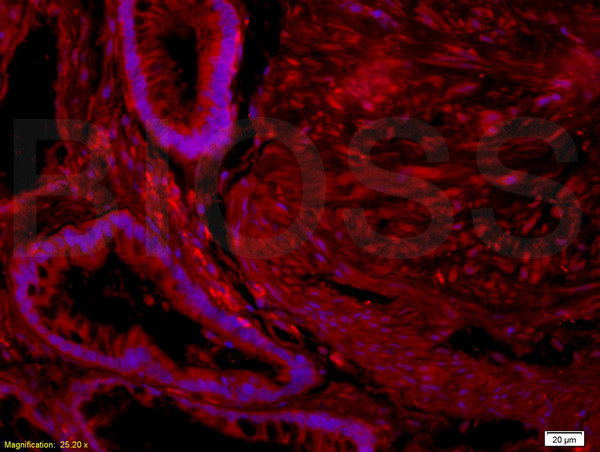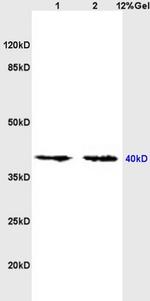Search Thermo Fisher Scientific
产品信息
BS-0181R
种属反应
宿主/亚型
分类
类型
抗原
偶联物
形式
浓度
纯化类型
保存液
内含物
保存条件
运输条件
靶标信息
The G-protein-coupled receptor (GPCR) superfamily is comprised of an estimated 600-1,000 members and is the largest known class of molecular targets with proven therapeutic value. The nociceptin receptor is a G-protein coupled opioid receptor that functions as receptor for the endogenous neuropeptide nociceptin. Ligand binding causes a conformation change that triggers signaling via guanine nucleotide-binding proteins (G proteins) and modulates the activity of down-stream effectors. Signaling via G proteins mediates inhibition of adenylate cyclase activity and calcium channel activity. Arrestins modulate signaling via G proteins and mediate the activation of alternative signaling pathways that lead to the activation of MAP kinases. Plays a role in modulating nociception and the perception of pain. Plays a role in the regulation of locomotor activity by the neuropeptide nociceptin.
仅用于科研。不用于诊断过程。未经明确授权不得转售。
篇参考文献 (0)
生物信息学
蛋白别名: K3 opiate receptor; Kappa-type 3 opioid receptor; kappa3-related opioid receptor; KOR-3; LC132 Receptor-Like; N/OFQ receptor; Nociceptin receptor; nociceptin receptor ORL1; nociceptin/ orphaninFQ receptor; nociceptin/orphanin FQ receptor; opiate receptor-like 1; opioid receptor-like 1; OPPRL1; ORGC; Orphanin FQ receptor; orphanin FQ receptor-a; orphanin FQ receptor-b; orphanin FQ receptor-e; peptide receptor; ROR-C; seven transmembrane G protein-coupled receptor; XOR1
基因别名: KOR-3; KOR3; LC132; MOR-C; morc; NOCIR; NOP; NOPr; OFQR; OOR; Oprl; OPRL1; ORGC; ORL1; XOR1
UniProt ID: (Human) P41146, (Mouse) P35377, (Rat) P35370
Entrez Gene ID: (Human) 4987, (Mouse) 18389, (Rat) 29256







